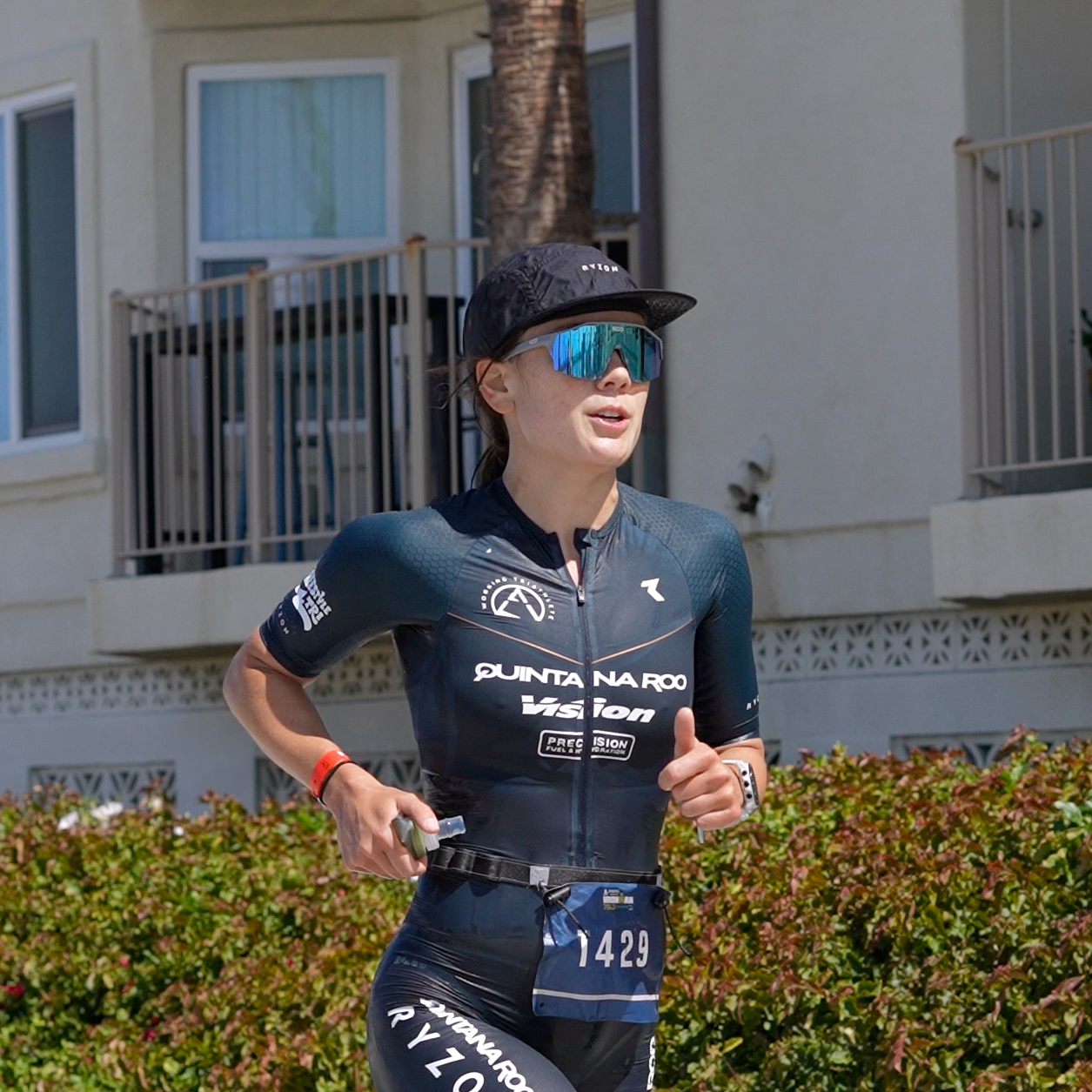
Jenna Haufler
IRONMAN 70.3® Oceanside
Jenna's headline numbers
Jenna's strategy
Fueling
Carbohydrate is the main fuel you burn when racing. Failing to fuel properly is a leading cause of underperformance in longer races.
Towards the end of 2023, Jenna began more structured gut training by implementing her race fueling strategy in key sessions, initially working to build her carb tolerance towards 60-70 grams per hour. She showcased this during her first race of the 2024 season at Oceanside, as she comfortably consumed ~79g/h on the bike and ~74g/h on the run to maintain her energy levels and support her high-level performance. Jenna should continue to train her gut this season to aim for 90g/h, especially on the bike when fueling is often a bit easier logistically to frontload her carb intake ahead of the run. Evidence suggests when exercising at a high intensity for over three hours, 90g/h+ is optimal for performance, so long as it doesn’t cause stomach problems.
Hydration
Taking on board an appropriate amount of fluid and sodium is essential to maintaining blood volume and supporting the cardiovascular effort needed to perform on race day.
Whilst the absolute amount of sodium and fluid consumed per hour is important, it’s critical to consider these in relation to each other. This is known as 'relative sodium concentration' and it’s expressed in milligrams per litre (mg/L). How much sodium you’re taking in per litre of fluid is more important than the absolute amount taken in per hour.
Sweat sodium concentration (mg/L) is largely genetically determined and remains relatively stable. Knowing how salty your sweat is enables you to replace a good proportion of your sweat losses, which can range from 200-2,000mg/L.
Whilst Jenna’s losses are on the low side, getting her hydration strategy right is still important if she wants to perform at her best.
Learn moreWith a history of issues in the heat, including many cramping bouts and even ending up in the medical tent at the USA Nationals in Milwaukee in 2023, Jenna had a Sweat Test and collected some initial sweat rate data to help her better understand the requirements of her individual sweat losses. Fortunately, the conditions at Oceanside were cooler than in previous years (average ~10℃ / 50°F), which kept her high sweat rate to a more moderate level. Jenna drank enough fluid to replace an adequate proportion of her losses, and consumed a high relative sodium concentration to encourage her body to retain this fluid. This enabled her to successfully avoid past issues related to excessive fluid and sodium depletion. Going forward, Jenna could look to increase her fluid intake slightly alongside her sodium intake to more closely match the concentration of her sodium losses, especially in hotter conditions where her sweat rate will be significantly higher.
Caffeine
Beyond the Three Levers of Performance (carb, sodium and fluid), caffeine is one of only a few substances that is proven to improve performance for most endurance athletes as it can help stave off mental and physical fatigue.
Jenna implemented a textbook caffeine strategy to meet the lower end of the scientific guidelines based on her bodyweight. She took a caffeine dose during the first third of both the bike and run, maximising the benefits of the stimulant, as it takes ~45-60 minutes to peak in the bloodstream. To further gain from caffeine’s performance enhancing qualities, she could look to swap her final carb dose ahead of the swim for a PF 30 Caffeine Gel.
How Jenna hit her numbers
Here's everything that Jenna ate and drank on the day...
Jenna's weapons of choice
Final thoughts
Jenna's full stats
Data Confidence?
There is an adequate level of accuracy in the data collected and the numbers reported. The athlete manages to recall what they ate and drank including most specifics (brands flavours quantities plausible estimations of volumes). However there are estimations made within the data which affect the overall confidence level in the data reported.